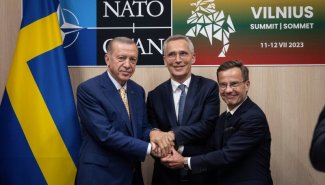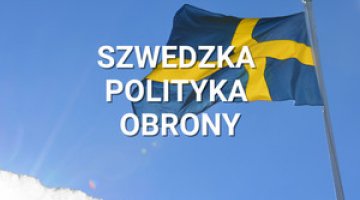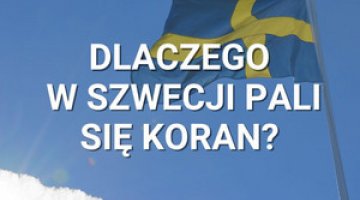Sweden in NATO: the rear for the Alliance’s north-eastern flank?

Sweden has been on the threshold of membership in NATO since the Alliance’s Madrid summit in June 2022. However, for its full-fledged participation in all NATO political and military structures, it still needs Turkey and Hungary to ratify the accession protocol. Regardless of how quickly those countries take that decision, though, Sweden is now beginning to conceptualise its role in NATO as a country that binds the Atlantic, Arctic and Baltic areas together; that will provide strategic depth and secure the movements of Allied troops for collective defence operations, primarily of the Nordic countries, followed by the Baltic states and Poland. Stockholm sees itself primarily as a member of the Nordic group in the Alliance and (together with Norway and Finland) as part of the NATO northern operational area. Sweden will contribute relatively small land force capabilities to the Alliance, but these will still be significant in terms of its modernised air force and navy.
In the event of a long delay in NATO accession, or the absence thereof, Sweden’s contingency plan envisages the further development of its military capabilities: an increase in spending for this purpose to over 2% of GDP by 2024, deepening relations with Nordic neighbours and building multilateral ties – particularly with the US and the UK, with which Stockholm has signed advanced military cooperation agreements, or is in the process of formalising and implementing them.
A bumpy road to membership
Sweden applied to join NATO together with Finland on 18 May 2022. The Alliance extended an invitation to both countries at the Madrid summit in June 2022, after they signed a trilateral memorandum with Ankara where they agreed to meet its demands in the area of counterterrorism and to lift the embargo on arms exports to Turkey. In the case of Helsinki, the membership ratification process proved simpler, mainly because the Kurdish diaspora in Finland is small, much smaller than that in Sweden. Thus, on 4 April 2023 Finland became the thirty-first member of the Alliance. In the case of Sweden, however, the same process has been considerably protracted. In response to Turkish demands, Sweden has made significant changes to its domestic counterterrorism law and lifted its informal embargo on arms exports, among other things. Behind the scenes, however, Ankara has escalated its demands on matters unrelated to Stockholm. It wants to purchase US F-16 fighter jets, and revitalise the integration process with the European Union, mainly in terms of reforming the customs union and bringing about visa liberalisation.
According to the agreement concluded on 10 July 2023 in Vilnius between Swedish prime minister Ulf Kristersson, Turkish president Recep Tayyip Erdoǧan and NATO Secretary General Jens Stoltenberg, the Turkish parliament was to ratify Stockholm’s accession protocol in October 2023, upon the resumption of the session after the summer recess.[1] On 23 October, President Erdoǧan signed the protocol and submitted it to the parliament, which began discussions on Sweden’s NATO membership in November. Budapest is also delaying the ratification of the accession protocol, demanding that Swedish politicians stop criticising the state of democracy in Hungary.
Sweden therefore now has the status of a NATO invitee state, which allows it to participate as an observer in the meetings of the North Atlantic Council and the NATO Military Committee. In addition, Stockholm participates in joint exercises, arms procurement planning and information exchange.[2] Sweden’s full integration and inclusion in regional defence plans will occur with the ratification of the accession protocol by Turkey and Hungary; this may last weeks or months, but will presumably be finalised before NATO’s anniversary summit in Washington in July 2024. In the event that Sweden does not join NATO, however, it can be expected to make maximum use of the rights resulting from its current status, as well as to further deepen its multilateral cooperation, primarily with the United States, the United Kingdom and the other Nordic countries.
Sweden in and out of NATO
Meanwhile, Sweden has been developing a vision of its role in NATO for over a year now. It has declared[3] that it would like to actively participate in all three of the Alliance’s core tasks: deterrence & defence, crisis management, and cooperative security in line with the Alliance’s 360-degree approach. For the first of these, Stockholm has proclaimed its readiness to strengthen NATO’s eastern flank and to contribute to the Baltic, Iceland and the Black Sea Air Policing, as well as to reinforce NATO’s Standing Maritime Group (SNMG1) and the Standing Mine Countermeasures Group (SNMCMG1). The Swedish Armed Forces’ recommendations for Swedish NATO membership from October 2022 stipulate that the priority for deterrence and defence should be to contribute to the Alliance’s response forces. It was however noted that these ambitions must be measured against the country’s actual military capabilities, and the time required to develop new ones should also be taken into account. Sweden’s involvement would therefore be permanent, temporary or recurrent.[4] As the Swedish Land Forces are relatively small, it should be assumed that the country’s participation in NATO land operations would be the smallest. In terms of crisis management, the Swedish Armed Forces have proposed prioritising participation in NATO operations over that in UN missions. Currently Sweden maintains around 100 personnel as part of international missions and operations (for example in Kosovo as part of the KFOR operation).[5] Stockholm is likely to be actively involved in NATO’s cooperation with its partners. It is currently significantly involved in supporting Ukraine, both bilaterally and through multilateral initiatives. According to official Swedish figures, Stockholm has so far pledged more than €2.2 bn in aid to Kyiv, including more than €1.8 bn in military support.[6]
The Swedish Defence Commission prepares the ground for a new Swedish Security Strategy 2026–2030, which is intended to reflect the broad security policy consensus in the country. Its report from June 2023 also draws attention to the importance of bilateral and multilateral cooperation for Stockholm, including outside NATO.[7] The Nordic Defence Cooperation (NORDEFCO, a format bringing together Sweden, Finland, Norway, Denmark and Iceland), the British-led Joint Expeditionary Force (JEF), the French European Intervention Initiative (EI2) and the German Framework Nations Concept (FNC) were identified in the report as instruments that complement the Alliance and can support Sweden, especially in the initial phases of international crises. It recommends that these military cooperation formats be maintained, and that relations be further developed with the US, the UK, Germany, France, the Netherlands and Poland, among others.
Particularly important is the US, with whom talks on a Defence Cooperation Agreement (DCA) were finalised at the end of October 2023. The US is to be granted access to several Swedish bases and permitted to store arms and military equipment on Swedish territory (the local media have mentioned Gotland, Gothenburg, Luleå and Östersund in this context). The agreement is expected to be signed by the end of the year.[8] At the same time, Stockholm is developing cooperation with the US European Command (EUCOM), and options for joint US-Swedish operational planning are being explored. The UK has also been identified as an important partner. On 13 October 2023 Sweden signed a document with United Kingdom to establish a bilateral strategic partnership. This will cover several areas, including security and defence. The parties intend to strengthen the JEF format for joint training and exercises, and work to operationalise it for potential crises in Northern Europe. The JEF would function as an ‘additional tier of security’ in the region to complement NATO’s defence plans. Furthermore, cooperation is envisaged in the area of arms industries, in the sale of armaments and military equipment, and in the fight against terrorism.[9]
In its report, the Defence Commission furthermore advocates deepening cooperation between NATO & the EU, and defining a clear division of tasks between them. By 2022, due to the lack of formal membership in a military alliance, Sweden’s bilateral and multilateral ties served as an alternative to ensure its security. However, after formal accession to NATO, Stockholm intends to maintain and develop the existing formats for military cooperation as well.
Sweden and collective defence
The June 2023 Defence Commission report portrays Sweden as a forward base for allied land, sea and air forces, as well as a supply and transit area for NATO. The country does not see itself as a frontline state, but as one that provides strategic depth, and gives the ability to secure transit routes to defend the Baltic states, northern Norway and Finland. Thanks to the Host Nation Support agreement between Sweden and NATO, concluded in 2014 and ratified two years later, NATO forces can already use Swedish territory, airspace and territorial waters, albeit requiring the Swedish government’s consent each time. From the point of view of Sweden and the other Nordic countries, its main task in NATO should be to support the collective defence of the Northern European allies, including Finland, Denmark, Norway, then the Baltic states and subsequently Poland, as well as to participate effectively in it. From Stockholm’s perspective, due to its central geographical location, Sweden binds the Atlantic, Arctic and Baltic regions together, and thus has a special role to play in securing the movement routes of allied forces, in the southern, central and northern parts of its territory.
A significant asset (which at the same time could also become a potential liability in the realities of an armed conflict) for Sweden is its control over Gotland, which is operationally the most strategically located island in the Baltic Sea from the point of view of any potential conflict with Russia. In 2018, Stockholm recreated a land forces regiment there which had been disbanded in 2004; this is gradually being developed and is expected to reach full combat readiness by 2030. It currently has more than 370 soldiers in two battalions, but neither of those subunits can be deemed complete.[10] It can be assumed that due to the relatively small size of the Swedish Armed Forces, especially their land component, Stockholm might not be able to field adequate forces to fight in the northern part of the country if it had to contribute to the defence of the Baltic states or Poland in the Baltic Sea region. In such a situation it would have to rely on its other allies, especially Finland. The use of Swedish Land Forces in NATO operations in the High North and the Baltic Sea region will be discussed further and will probably be included in NATO’s regional defence plans after Sweden’s formal accession to the Alliance.
Nordic cooperation in the Alliance
Over the years Sweden has sought to develop cooperation with its Nordic neighbours, first of all Finland. Stockholm therefore sees itself primarily as part of the Nordic group in the Alliance and (together with Norway, Finland and partly Denmark) as part of a single operational area in Northern Europe. This self-perception is reflected in public discussions about its formal assignment to the Alliance’s northern theatre of operations, which falls under NATO Joint Force Command (JFC) in Norfolk, USA.[11] The regional defence plans approved at the Vilnius Summit state that while Norway will be part of the Northern plan covering European Arctic and the Atlantic under the control of the Norfolk Command, Finland will belong to the plan covering Central Europe (the Baltic Sea region and Central Europe), with the Joint Force Command in Brunssum, the Netherlands.[12] There are also voices in Finland suggesting that the three Nordic countries should be placed in one regional defence plan, that of JFC Norfolk.
In July 2023, after the Vilnius summit, Norway’s Chief of Defence proposed that Bodø should become the headquarters of a joint Nordic command to represent Norfolk in this part of Europe.[13] He added that this proposal had already been supported by all the Nordic countries. In September 2023 the Norwegian defence minister, citing a position adopted jointly by the chiefs of defence of Norway, Sweden, Finland and Denmark, urged the Supreme Allied Commander Europe (SACEUR) to decide on the assignment of the entire Nordic region to JFC Norfolk once the headquarters has become organisationally ready.[14] According to unofficial reports, SACEUR has accepted this proposal.
According to the Nordic countries, this would translate into the development of the already well-advanced regional military cooperation. This has so far been based on the NORDEFCO format, which has been made use of in various configurations since 2014, mainly by Norway, Sweden and Finland.[15] Among other things, these countries agree to use each other’s air and naval bases. Prior to 2022, Swedish-Finnish military cooperation was expanding dynamically. Since the signing of the 2014 Action Plan for Deepened Defence Cooperation, the two countries have worked to achieve the full interoperability of all types of armed forces. In 2018, a framework memorandum was concluded as the basis for defence cooperation in times of peace, crisis and war. This document enabled coordinated operational planning without the formal obligations of an alliance.[16] In 2022, an additional bilateral Host Nation Support agreement was signed,[17] which provides for mutual support for military forces on each other’s territories.
Following the start of the full-scale Russian invasion of Ukraine, Sweden, Norway, Finland and Denmark concluded a memorandum in March 2023 to integrate the air forces of the four countries, which should now be able to act jointly in any situation. Through the development of the joint Nordic concept of air operations,[18] the signatories expressed their desire to integrate command structures, operational planning, the use of air forces, joint monitoring of airspace, training and exercises. Although Sweden’s membership of NATO will enable it to participate fully in the Alliance’s structures and mechanisms, it is expected that Nordic cooperation in the formats developed so far will be continued, and will remain an important supplement to the Alliance.
Sweden’s military contribution to NATO
Sweden has relatively small armed forces: at the end of 2022, it consisted of 14,700 professional soldiers, 5,500 conscripts (the number is expected to increase to 10,000 by 2030) and 11,400 reserve soldiers (who are still partially on active duty), 9,600 civilian employees and 21,500 Home Guard soldiers.[19] Despite their small numbers, however, they have extensive capabilities and modern weaponry. As part of its preparations for NATO membership, Stockholm has decided to increase defence spending: after years of keeping it at around 1% of GDP, in 2022 it is estimated to reach the equivalent of around 1.3% of GDP (just over $8 bn), and – as announced in early September this year – the defence budget is expected to increase to around $11 bn (2.1% of GDP) in 2024.[20] This represents a sharp acceleration on the part of the centre-right government, which (until September this year) had officially planned to reach the 2% of GDP benchmark for defence in 2026.
The Swedish Land Forces are small, and it would be a major effort for them to generate and permanently rotate a battalion-sized NATO battlegroup presence abroad; their contribution to the collective defence would therefore be rather modest. They consist of just two mechanised brigades[21]; another lighter brigade is being developed and areduced motorised brigade is being formed, as is an additional, third artillery battalion.[22] There are plans to create a division-level headquarters by 2030. Air defence is also being developed, with four medium-range air defence Patriot batteries that in 2022 replaced the obsolete Hawk systems.[23] 40 Home Guard battalions supplement the Swedish Land Forces, but these units have only light armaments and a low level of completion.[24]
The Swedish Air Force is the largest in the Nordic region in terms of the number of combat aircraft. It has 94 JAS-39 C/D Gripen fighter jets at its disposal, and 60 more in the modern E version have already been ordered (these will replace the C version). However, these capabilities are limited by the availability of maintainers, up of conscripts and reservists. The JAS-39 Gripen fighter jets are equipped with RBS15 anti-ship missiles as well as Meteor and AMRAAM air-to-air missiles, making them useful to NATO in a potential confrontation in the Baltic Sea region. Sweden also has sizeable reconnaissance (two Saab 340 Erieye early warning aircraft, which will be replaced by two new GlobalEye aircraft in 2027)[25] and transport capabilities (five C-130H Hercules aircraft and one KC-130H tanker aircraft)[26].
The Swedish Navy will considerably strengthen the NATO’s potential in the Baltic Sea. The core of the surface fleet consists of seven corvettes, five of which are Visby-class vessels with reduced-visibility radar cross-sections. All vessels can combat surface and underwater targets, but they lack air defence systems.[27] However it is planned to equip them with British Sea Ceptor (CAMM) anti-aircraft missiles as part of their overhaul and modernisation.[28] In addition, the Navy has eight minesweepers, 13 patrol vessels and 165 CB90 fast assault craft, and it is also currently replacing its HSwMS Orion signals intelligence gathering vessel with the new HSwMS Artemis. Of particular note are Sweden’s undersea capabilities, which after those of Germany are the largest of all the countries in the Baltic Sea area. In 2028, the submarine fleet will be expanded from the current four to five vessels.[29] The Navy’s Amphibious Corps consists of two regiments which have extensive capabilities in countering surface ships, laying and disarming sea mines, naval boarding actions, and sea landing. Due to the size of the Corps, it will multiply NATO’s capabilities in the area of coastal operations in the Baltic Sea basin.
[1] J. Gotkowska, J. Graca, ‘NATO summit in Vilnius: breakthroughs and unfulfilled hopes’, OSW Commentary, no. 526, 13 July 2023, osw.waw.pl.
[2] ‘Relations with Sweden’, NATO, 12 April 2023, nato.int.
[3] U. Kristersson, ‘Sweden’s role in NATO’, Government Offices of Sweden, 9 January 2023, government.se.
[4] Överbefälhavarens råd avseende svenskt Natomedlemskap, Försvarsmakten, 31 October 2022, forsvarsmakten.se.
[5] Current international missions, Swedish Armed Forces, April 2023, forsvarsmakten.se.
[6] The Comprehensive Assistance Package, the main NATO support programme for Ukraine, provided €17 million, and through the UK-administered International Fund for Ukraine (IFU) around €30 million. ‘Sweden’s support to Ukraine’, Government Offices of Sweden, 6 October 2023, government.se.
[7] Allvarstid. Försvarsberedningens säkerhetspolitiska rapport 2023, Regeringskansliet, 19 June 2023, regeringen.se.
[8] A. Öbrink, ‘Nytt avtal kan ge USA tillgång till svenska militärbaser’, SVT Nyheter, 26 October 2023, svt.se.
[9] Strategic Partnership between the United Kingdom and Sweden, Government Offices of Sweden, 13 October 2023, government.se.
[10] Verksamhet på Gotland, Försvarsmakten, 12 January 2022, forsvarsmakten.se.
[11] E. Adamson, M. Ålander, ‘Finland and Sweden are ready. Is NATO?’, The Royal Swedish Academy of War Sciences, 10 August 2023, kkrva.se.
[12] NATO maintains three (operational) Joint Force Commands: JFC Norfolk (USA), JFC Brunssum (the Netherlands) and JFC Naples (Italy). Under the new regional defence plans approved at the NATO summit in Vilnius in July 2023, each of the three commands will lead defence operations in one of three theatres of operations: north (Norfolk), central (Brunssum) and south (Naples). See J. Gotkowska, J. Graca et al, ‘NATO Summit in Vilnius...’, op. cit.
[13] O.M. Rapp, ‘Jobber for ny Nato-kommando’, Klassekampen, 13 July 2023, klassekampen.no.
[14] ‘Gram’s speech at the NATO Military Committee Conference 2023 in Oslo’, Regjeringen.no, 16 September 2023, regjeringen.no.
[15] To date, this military cooperation has focused, among other things, on developing the interoperability of naval, air and (subsequently) land forces, as well as joint arms procurement, exercises and exchanges of information. For example, cross-border air force exercises between Norway, Sweden and Finland have taken place almost weekly since 2009.
[16] Memorandum of Understanding between the Government of the Republic of Finland and the Government of the Kingdom of Sweden on Defence Cooperation, Ministry of Defence (Finland), 9 July 2018, defmin.fi.
[17] Memorandum of Understanding between the Government of the Republic of Finland and the Government of the Kingdom of Sweden Concerning the Provision of Host Nation Support for Military Activities, Ministry of Defence (Finland), 7 June 2022, defmin.fi.
[18] ‘Nordiske air chiefs: Vi skal have ét samlet luftforsvar’, Forsvaret, 24 March 2023, forsvaret.dk.
[19] Försvarsmaktens årsredovisning 2022, Försvarsmakten, 22 February 2023, p. 41, forsvarsmakten.se.
[20] ‘Military budget initiatives for 2024’, Government Offices of Sweden, 22 September 2023, government.se.
[21] Currently there are five mechanised battalions, a motorised battalion and a mechanised half-battalion on Gotland. Three new motorised battalions are being formed as part of the development of the Army.
[22] The heavy armament of the land forces consists of just 110 tanks of the local Leopard 2A5 version (10 of which have been handed over to Ukraine, and 44 will be upgraded to the Leopard 2A8 standard), together with some 350 CV90 family infantry fighting vehicles (50 have been transferred to Ukraine and the same number has been ordered), around 290 wheeled armoured personnel carriers (another 350 have been purchased) and 26 Archer self-propelled howitzers (8 have been sent to Ukraine, 14 have been sold to the UK and another 48 have been purchased), as well as more than 1200 tracked all-terrain vehicles.
[23] J. Tarociński, J. Gotkowska, ‘Safe skies? Air defence on NATO’s north and south-eastern flank’, OSW Commentary, no. 485, 19 January 2023, pp. 3–4, osw.waw.pl. Sweden also has four batteries of the IRIS-T SLS system, but has sold 12 of its 16 launchers to Germany for transfer to Ukraine.
[24] Organisation, Försvarsmakten, forsvarsmakten.se.
[25] ‘FMV beställer två GlobalEye till Försvarsmakten’, FMV, 30 June 2022, fmv.se.
[26] The aircraft are complemented by 15 UH-60M BlackHawks, 18 NH90 TTHs and 20 AW109s helicopters.
[27] M. Westberg, ‘Det ska marinens nya fartyg heta’, Försvarsmakten, 21 June 2023, forsvarsmakten.se. The navy is due to receive four new corvettes between 2030 and 2035. These are currently in the design phase. These vessels will be based on the Visby class, but armed with air defence systems.
[28] ‘Visbykorvetterna får luftvärnsrobot’, FMV, 16 November 2023, fmv.se. The first modernised corvette is expected to enter service in 2026.
[29] Following the entry into service of the two Blekinge-class submarines under construction, the completion of the mid-life update of the third Gotland-class sub and the withdrawal of the last obsolete Södermanland-class sub. ‘Saab Signs Contract for Mid-Life Upgrade of the Third Gotland-class Submarine’, Saab, 18 March 2023, saab.com.





